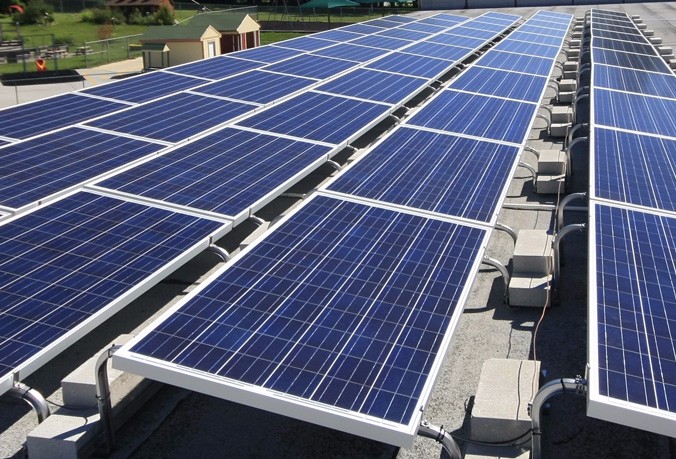When residents and businesses look to install rooftop solar panels, cities can make a big difference with solar-friendly permits and codes.
In the metro area, the Mid-America Regional Council (MARC) developed the Solar Ready Community Recognition Program to encourage communities to make it easier to install solar. So far, there are seven that have met the criteria. They include: Belton, Clay County, Gladstone, Kansas City (MO), Lee’s Summit, Liberty, Raymore and Shawnee.
Each community has implemented “best management practices” that include creating solar-ready construction guidelines, adding solar energy provisions in development codes, implementing solar permit checklists and adding information about solar energy installations on their websites.
Additionally, these Missouri and Kansas communities are working toward recognition in the Solar Ready II program: Blue Springs, Grandview, Independence, Lansing, Leavenworth, Lenexa, Mission, North Kansas City, Oak Grove, Olathe, Platte City, Prairie Village, Raytown, Roeland Park and Sugar Creek, as well as Jackson, Johnson and Wyandotte county governments.
The Solar Ready II program is funded by Rooftop Solar Challenge awards from the U.S. Department of Energy’s SunShot Initiative to reduce solar soft costs, such as permits and fees.
MARC program is a national model
Nationally, MARC has partnered with the National Association of Regional Councils to replicate its model to encourage solar energy use in nine metro areas across the country, including regional councils in central New York, northwest Indiana, southwest Florida, Philadelphia, Phoenix, Dallas, Cincinnati, Tampa Bay and Washington, D.C.
Does your house/business have solar potential?
Earlier this year, MARC launched the Metro Kansas City Solar Map website to help residents view the solar potential for any rooftop in the region.
Users can search an address and click on any rooftop to view its solar potential. The site calculates the potential system size, electricity cost savings, return on investment and monthly solar potential for residential and commercial rooftops.
The calculations are determined by a set of assumptions such as the average cost of electricity, installation costs, average available roof surface, etc. Information was collected from many sources including local installers and the National Renewable Energy Laboratory.
Businesses and homeowners can use the tool to estimate costs and energy savings potential of installing solar panels. The website also allows users to highlight a neighborhood or group of buildings to determine the solar potential of all rooftops in a certain community or block.
The tool is a starting point. The site cannot account for shade from trees or if a roof is able to support panels. Contacting a solar installer or contractor is the next step to determine the true potential for rooftop solar panels.
Find the solar mapping website at www.kcsolarmap.org. For more information, contact Laura Machala, MARC solar energy coordinator, at [email protected] or 816-701-8244.




